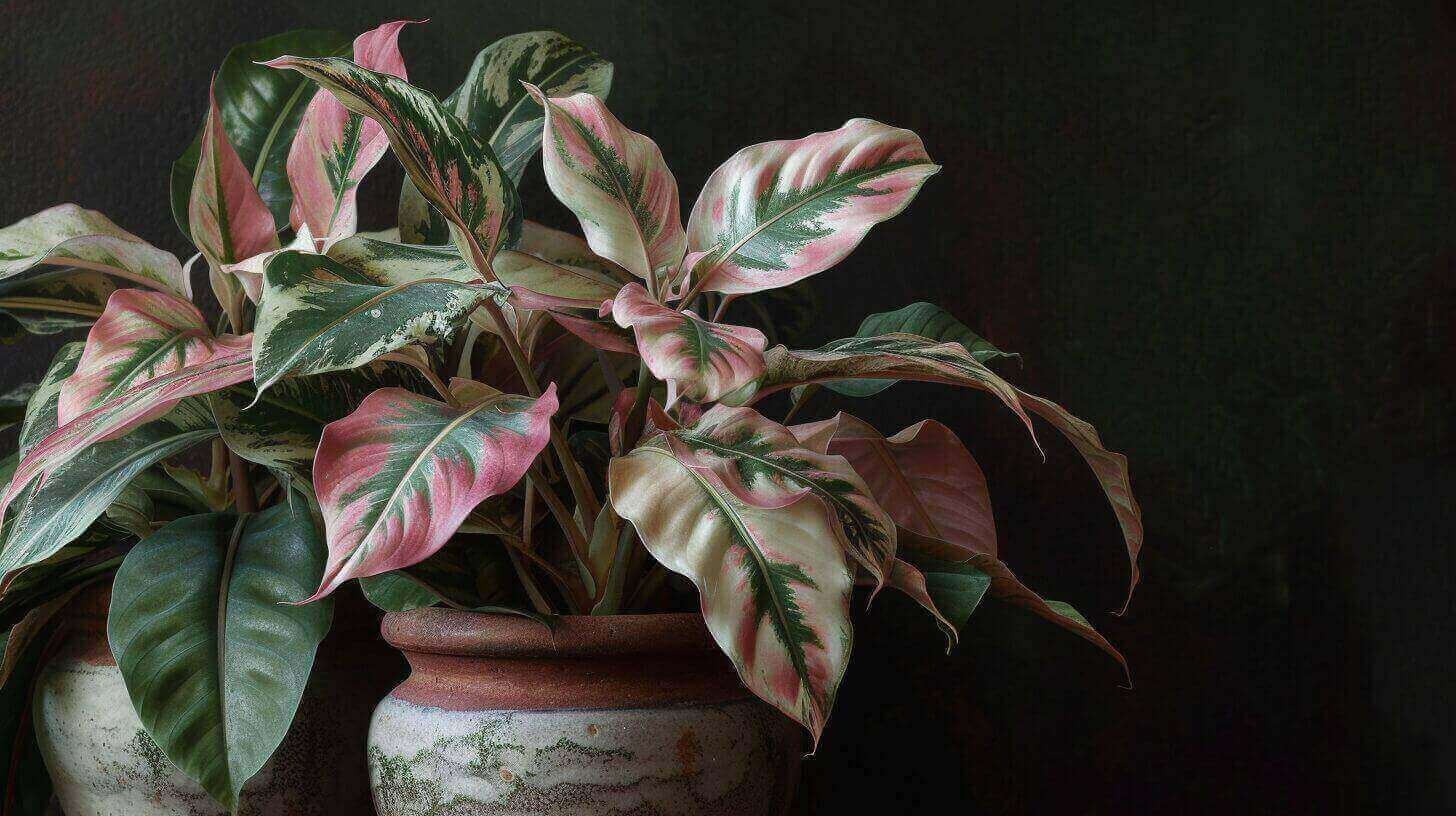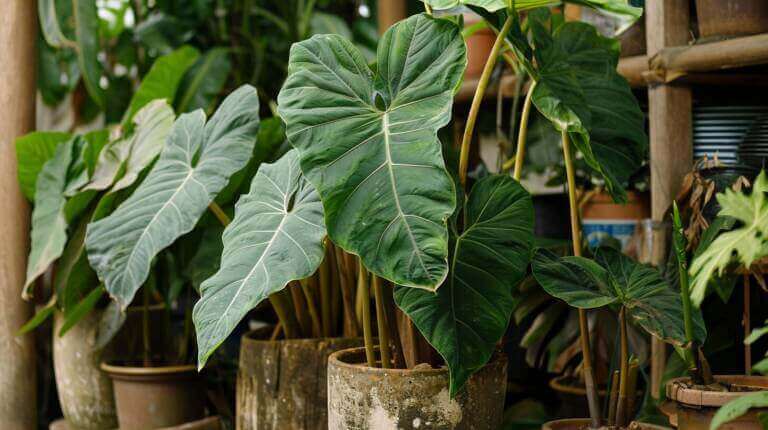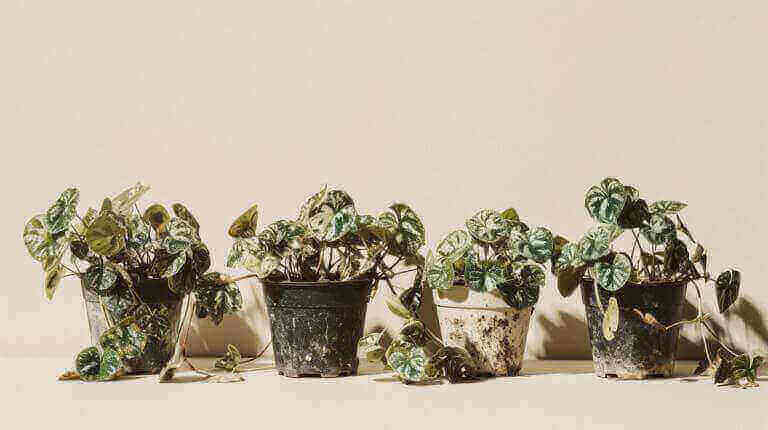Why Are My Ctenanthe Never Never Plant Leaves Curling? Identifying Issues and Solutions
If you’ve noticed that the leaves of your ctenanthe setosa plant are curling, it’s important to address this issue as soon as possible. Ctenanthe plants, also known as prayer plants or never-never plants, are prized for their beautiful foliage. However, curled leaves can be a sign of an underlying problem that needs attention. In this article, I will help you identify the possible causes of leaf curling in ctenanthe plants and provide effective solutions to restore your plant’s health.
Key Takeaways
- Leaf curling in ctenanthe plants can be caused by nutrient deficiency, watering issues, low humidity, and temperature extremes.
- To address leaf curling, adjust the watering routine, increase humidity levels, provide proper lighting, and maintain optimal temperature conditions.
- Common issues associated with ctenanthe plants include spider mites, root rot, low humidity, and inadequate lighting.
- Prevent leaf curling by providing proper care, including appropriate watering, humidity control, lighting, and pest control measures.
Common Problems & Causes of Ctenanthe Leaf Curling
Leaf curling in ctenanthe plants can be caused by several common factors. Identifying these causes is crucial in addressing the issue and restoring your plant’s health. The following are the main reasons why ctenanthe leaves may curl:
- Nutrient Deficiency: A lack of essential nutrients can lead to leaf curling. Ctenanthe plants require adequate fertilization to thrive.
- Watering Issues: Over-watering or allowing the soil to dry out too much can stress the plant and result in leaf curling.
- Low Humidity: Ctenanthe plants prefer high humidity environments. Insufficient moisture in the air can cause leaf curling.
- Temperature Extremes: Exposure to extreme temperatures, both hot and cold, can cause stress and result in curled leaves.
Understanding these common causes will help you take the necessary steps to address leaf curling in your ctenanthe plants.
Why Nutrient Deficiency Causes Leaf Curling
Nutrient deficiency is a common cause of leaf curling in ctenanthe plants. When the plant does not receive enough essential nutrients, it struggles to maintain its overall health and vitality. This can manifest as curled leaves. To prevent nutrient deficiency, it is important to provide proper fertilization. Use a balanced fertilizer formulated for indoor plants and follow the instructions for application. Regularly feeding your ctenanthe plant will ensure it receives the necessary nutrients to thrive and prevent leaf curling.
The Impact of Watering Issues on Leaf Curling
Watering issues can also contribute to leaf curling in ctenanthe plants. Over-watering can lead to root rot, which causes stress and curling of the leaves. On the other hand, allowing the soil to dry out too much can result in dehydration and leaf stress. To prevent these issues, it is important to find the right balance in watering. Check the moisture level of the soil regularly and water your ctenanthe plant when the top inch feels slightly dry. Adjusting your watering routine will help maintain optimal moisture levels and prevent leaf curling.
The Role of Humidity and Temperature in Leaf Curling
Ctenanthe plants thrive in high humidity environments. When the air is too dry, the plant can experience leaf curling as a response to dehydration and stress. To increase humidity levels, you can mist the leaves regularly or use a humidifier. Additionally, temperature extremes can impact the health of your ctenanthe plant. Avoid placing it in areas with drafts or near heating or cooling sources that can cause fluctuations in temperature. Maintaining a stable temperature and humidity level will help prevent leaf curling and promote overall plant health.
How to Address Leaf Curling in Ctenanthe Never Never Plant
When your ctenanthe plants start showing signs of leaf curling, it’s important to take action to restore their health. Here are some effective solutions to address this issue:
Adjust Watering
Proper watering is crucial for ctenanthe plants to thrive. To address leaf curling, adjust your watering routine. Allow the top inch of soil to dry slightly between waterings, but avoid letting the soil become completely dry. Over-watering can lead to root rot, while under-watering can cause the leaves to curl and become crispy. Find the right balance by monitoring the moisture levels of the soil and adjusting your watering frequency accordingly.
Increase Humidity
Ctenanthe plants prefer high humidity environments, so increasing the humidity around your plant can help alleviate leaf curling. You can do this by regularly misting the leaves with water or by using a humidifier in the room. Creating a more humid atmosphere will provide the ideal conditions for your ctenanthe plant and prevent the leaves from curling.
Provide Proper Lighting
Ctenanthe plants thrive in bright, indirect light. Exposing them to direct sunlight can cause the leaves to curl and scorch. Ensure that your plant is placed in a location with appropriate lighting conditions. If needed, you can use a sheer curtain or move the plant slightly away from the window to filter the sunlight. Maintaining the right amount of light will promote healthy growth and prevent leaf curling.
Maintain Optimal Temperature
Ctenanthe plants are sensitive to temperature extremes, so it’s important to keep them in a stable, moderate environment. Avoid exposing your plant to extreme heat or cold, as this can stress the plant and lead to leaf curling. Maintain a temperature range of 65-75°F (18-24°C) to ensure that your ctenanthe plant remains healthy and free from leaf curling.
| Solutions | How to Implement |
|---|---|
| Adjust watering | Allow the top inch of soil to dry slightly between waterings |
| Increase humidity | Mist the leaves regularly or use a humidifier in the room |
| Provide proper lighting | Place the plant in bright, indirect light |
| Maintain optimal temperature | Keep the plant in a temperature range of 65-75°F (18-24°C) |
Common Issues Associated with Ctenanthe Plants
When caring for ctenanthe plants, it’s important to be aware of the common issues that can affect their health and cause leaf curling. By understanding these issues, you can take proactive steps to prevent or address them, ensuring your ctenanthe plant thrives in optimal conditions.
Spider Mites
One of the most common problems that ctenanthe plants face is an infestation of spider mites. These tiny pests can quickly multiply and wreak havoc on the foliage, causing the leaves to curl. To identify a spider mite infestation, look for small webbing on the leaves and tiny insects moving about. If left untreated, spider mites can severely damage the plant.
Root Rot
Another issue that ctenanthe plants may encounter is root rot. This occurs when the plant’s roots are consistently exposed to excessive moisture, leading to decay. Over-watering or insufficient drainage can contribute to root rot, causing the leaves to curl and the plant’s overall health to decline. It’s important to ensure that the soil has proper drainage and to water the plant appropriately to prevent this issue.
Low Humidity and Inadequate Lighting
Ctenanthe plants thrive in high humidity environments, so low humidity levels can cause leaf curling and other problems. In addition, inadequate lighting, whether it’s too much or too little, can also impact the health of the plant and contribute to leaf curling. It’s important to provide your ctenanthe plant with the right balance of humidity and lighting to promote healthy growth.
| Common Issues | Symptoms | Solutions |
|---|---|---|
| Spider Mites | – Small webbing on leaves – Tiny insects moving about | – Isolate affected plants – Apply organic insecticidal soap – Wipe leaves with a damp cloth – Use predatory mites as biological control |
| Root Rot | – Wilting leaves – Discolored and mushy roots | – Improve soil drainage – Adjust watering schedule – Trim affected roots – Treat with a fungicide |
| Low Humidity and Inadequate Lighting | – Leaf curling – Stunted growth – Yellowing leaves | – Increase humidity with misting or a humidifier – Provide proper lighting levels – Avoid direct sunlight – Rotate plant for even light exposure |
Tips for Preventing Leaf Curling in Ctenanthe Plants
When it comes to preventing leaf curling in your ctenanthe plants, proper care is essential. By following these tips, you can help keep your plants healthy and leaf curling at bay.
Watering:
Watering your ctenanthe plants correctly is crucial. Make sure the soil is well-draining to avoid waterlogged roots, which can lead to leaf curling. Allow the top inch of soil to dry slightly between waterings, but don’t let it become too dry. Adjust the watering frequency to meet the plant’s needs.
Humidity:
Ctenanthe plants thrive in high humidity environments. Increase humidity levels by misting the leaves regularly or using a humidifier near the plant. This will help prevent leaf curling and keep your ctenanthe plant happy and healthy.
Lighting:
Proper lighting is important for ctenanthe plants to prevent leaf curling. Avoid placing them in direct sunlight, as it can scorch the leaves. Instead, provide bright, indirect light. Finding the right balance will help maintain the plant’s health and prevent leaf curling.
Pest Control:
Pests can be a common issue for ctenanthe plants and can contribute to leaf curling. Implement proper pest control measures by regularly inspecting your plants for pests like spider mites. If you notice any infestation, treat it promptly using appropriate methods to protect your plants.
By following these tips and providing your ctenanthe plants with proper care, you can prevent leaf curling and ensure their overall health and vitality.
FAQ
Why are my ctenanthe leaves curling?
Ctenanthe leaves can curl due to various reasons, including nutrient deficiency, watering issues, low humidity, and temperature extremes.
How can I address leaf curling in ctenanthe plants?
To address leaf curling, adjust your watering routine, increase humidity levels, provide proper lighting, and maintain optimal temperature conditions.
What are some common issues associated with ctenanthe plants?
Common issues include spider mites infestation, root rot from over-watering or poor drainage, low humidity, and inadequate lighting.
How can I prevent leaf curling in ctenanthe plants?
To prevent leaf curling, provide proper care including correct watering, well-draining soil, increased humidity, appropriate lighting, and effective pest control measures.







